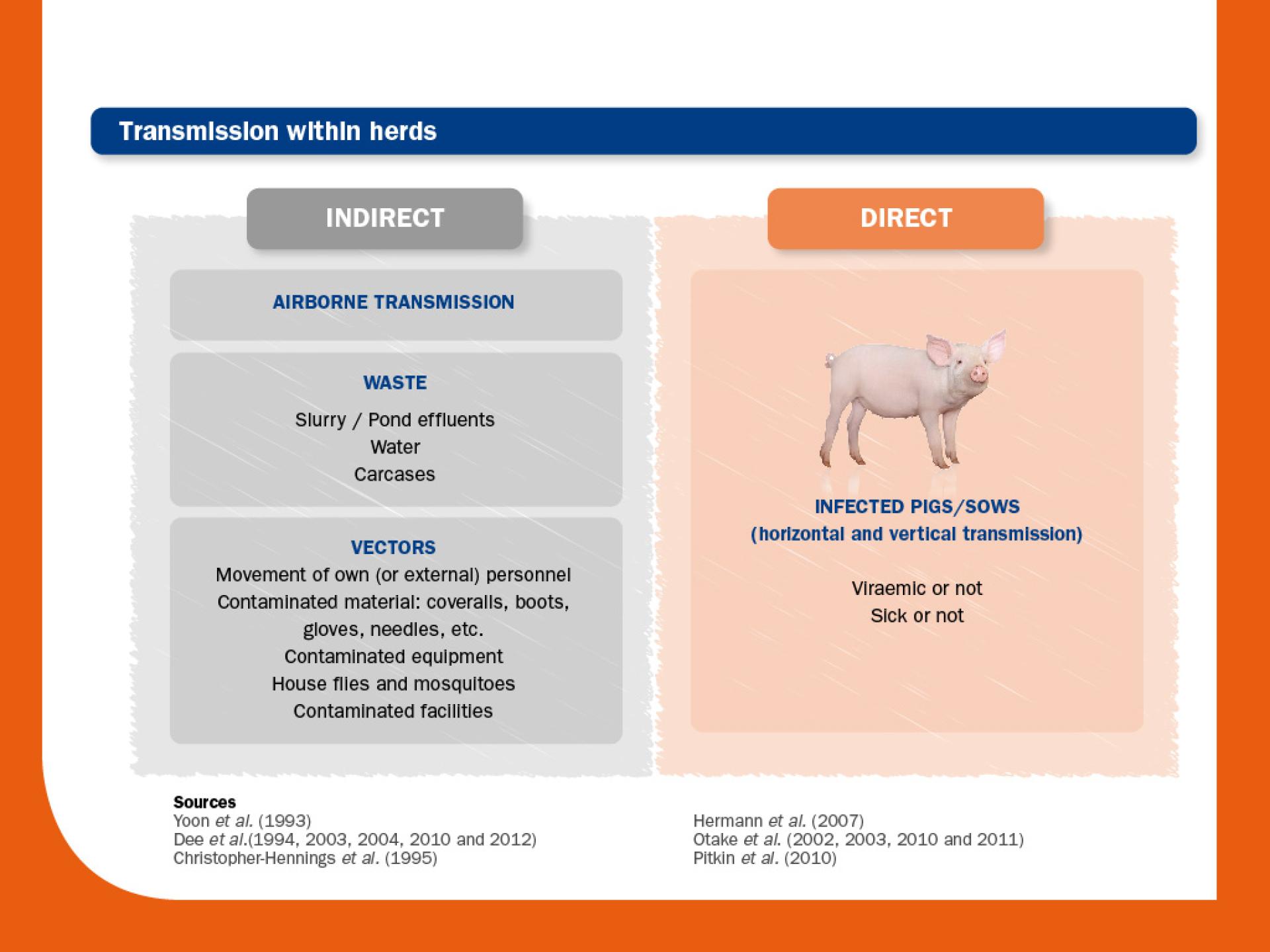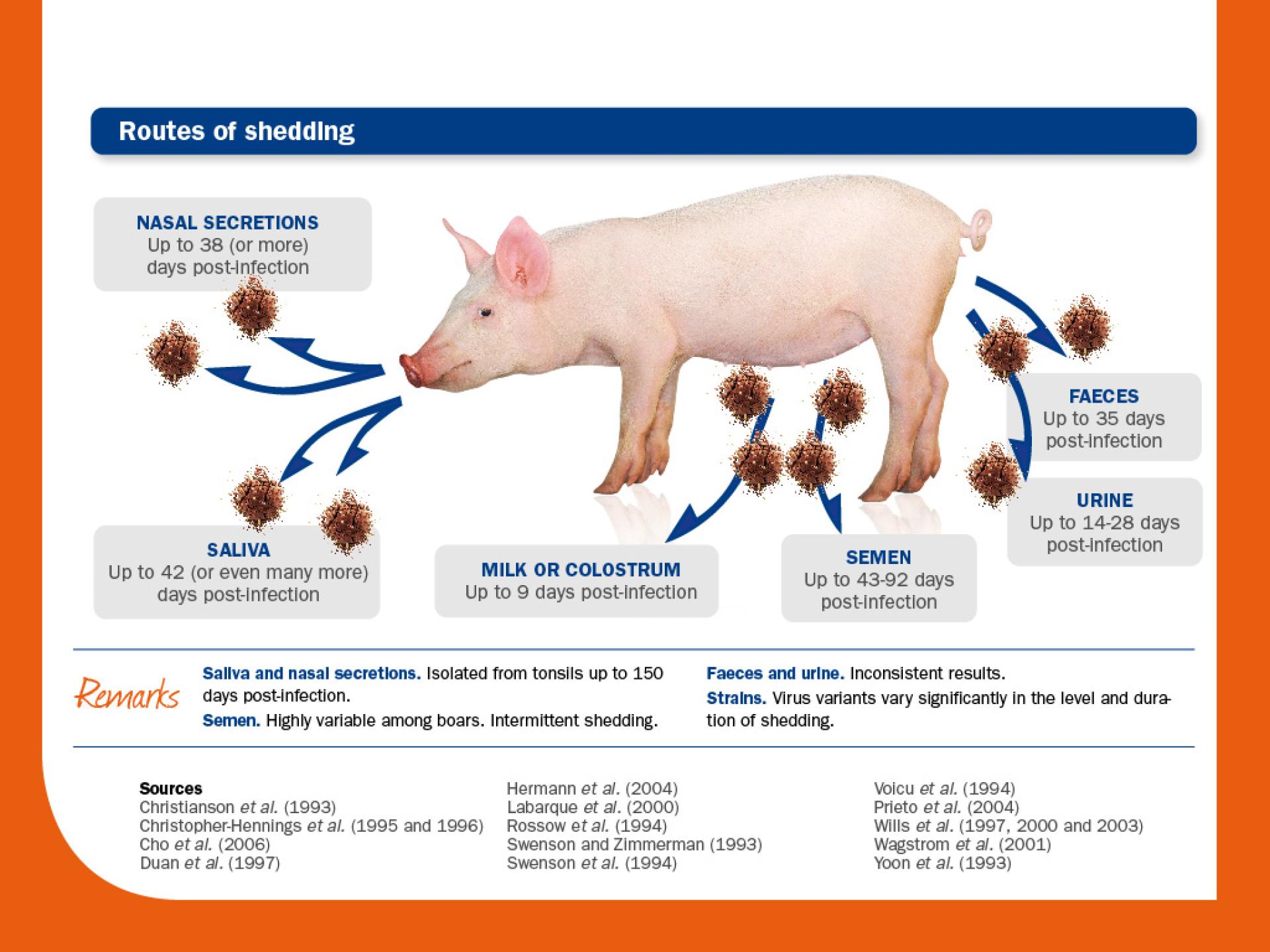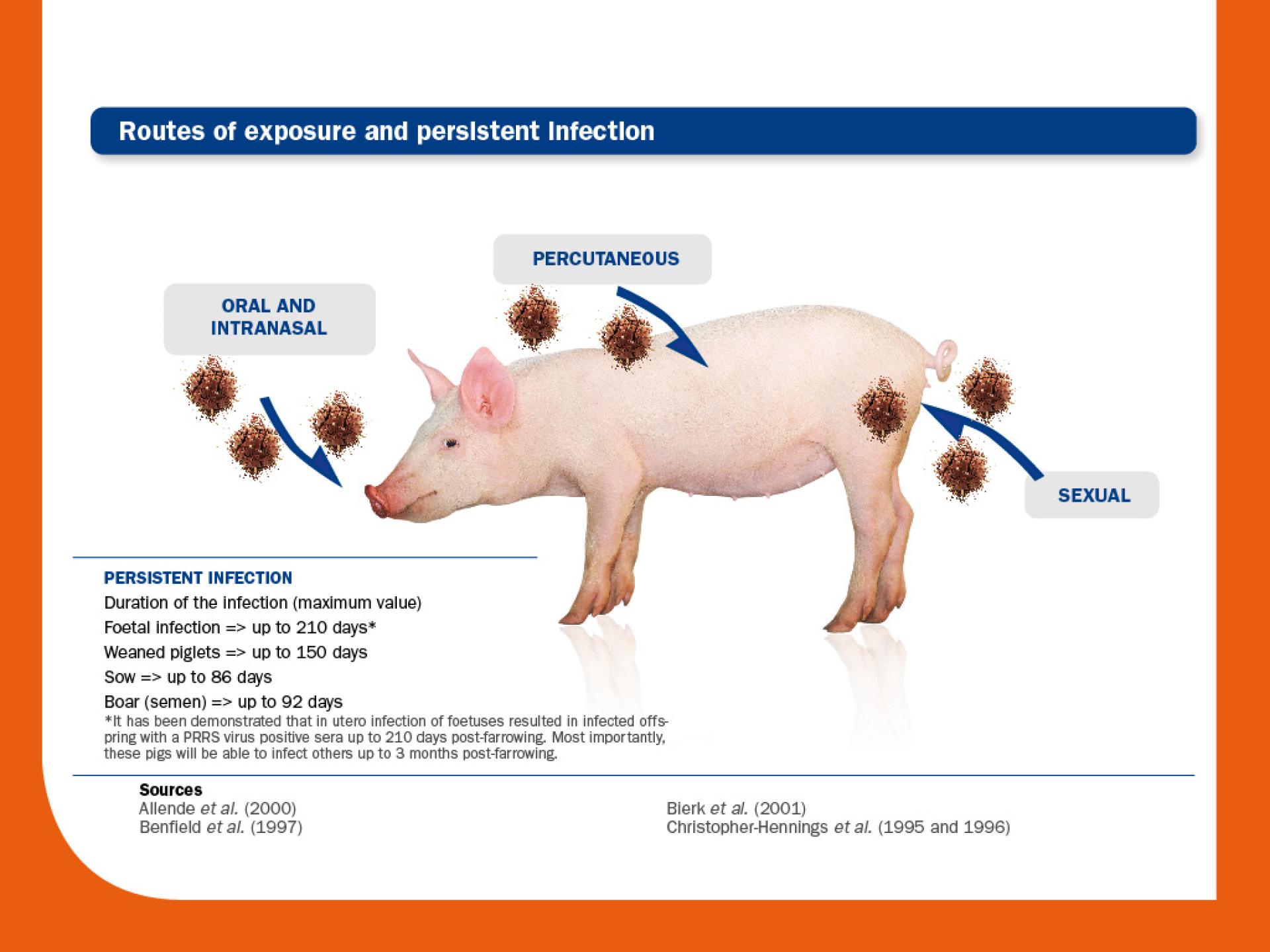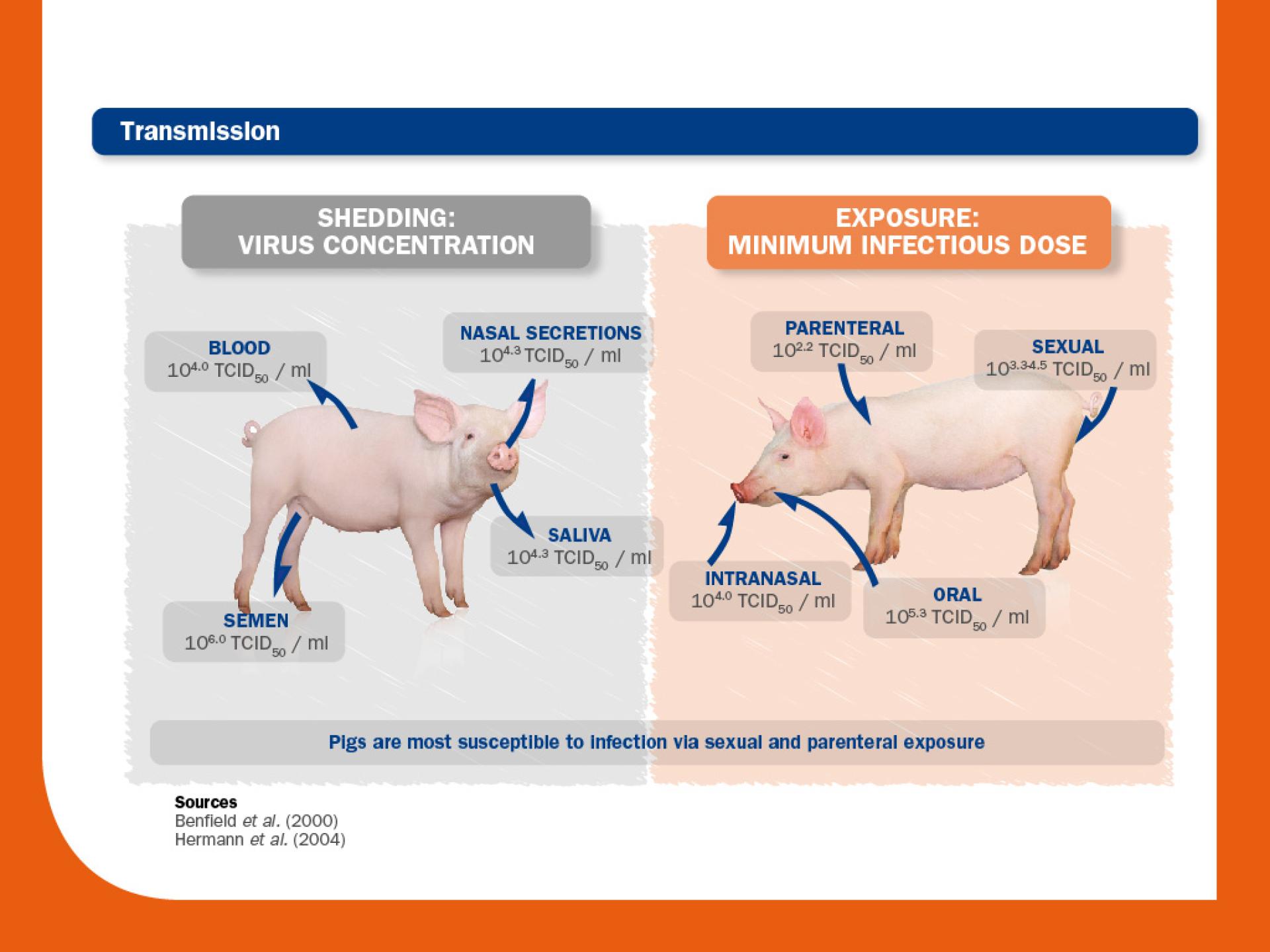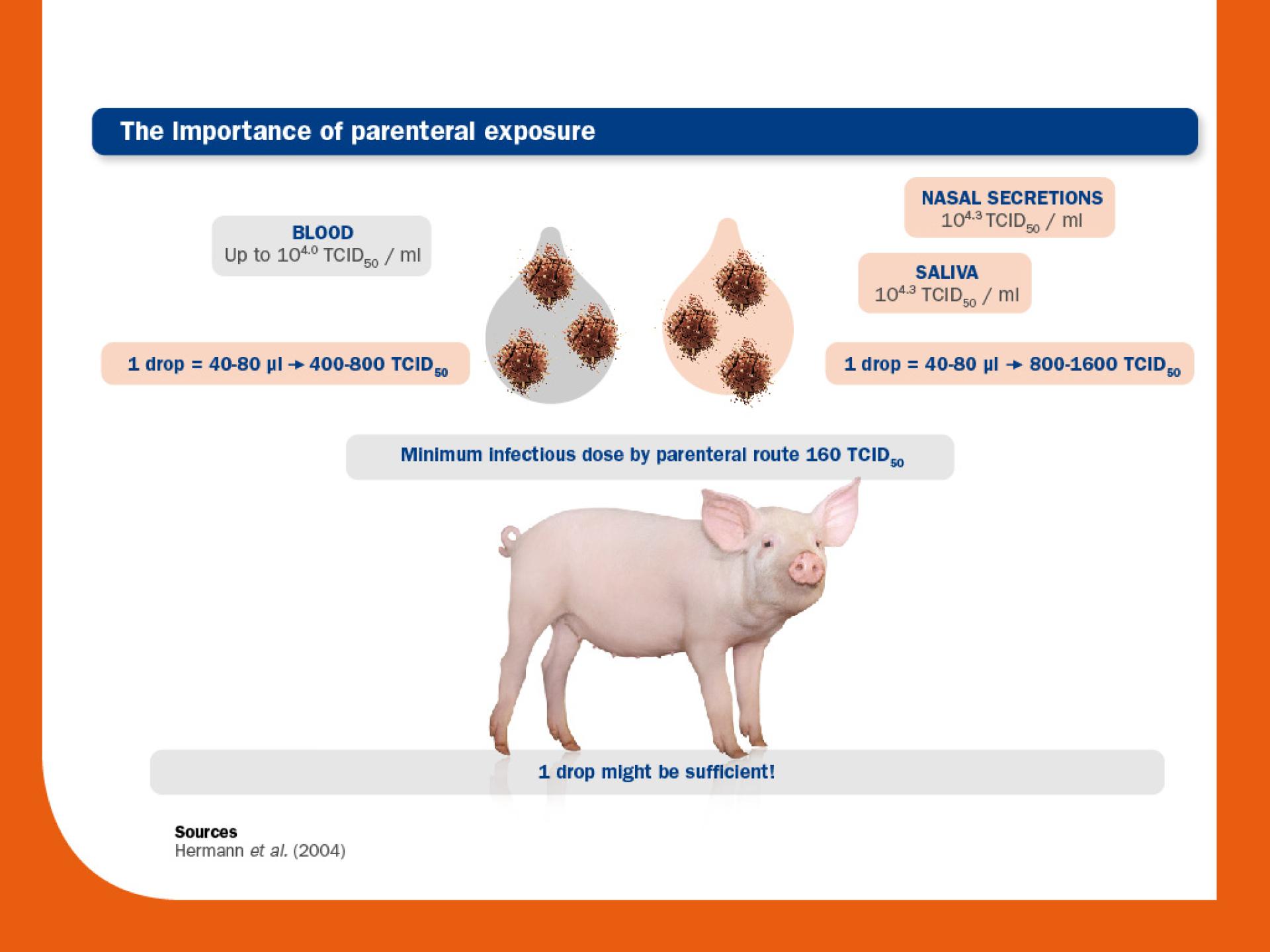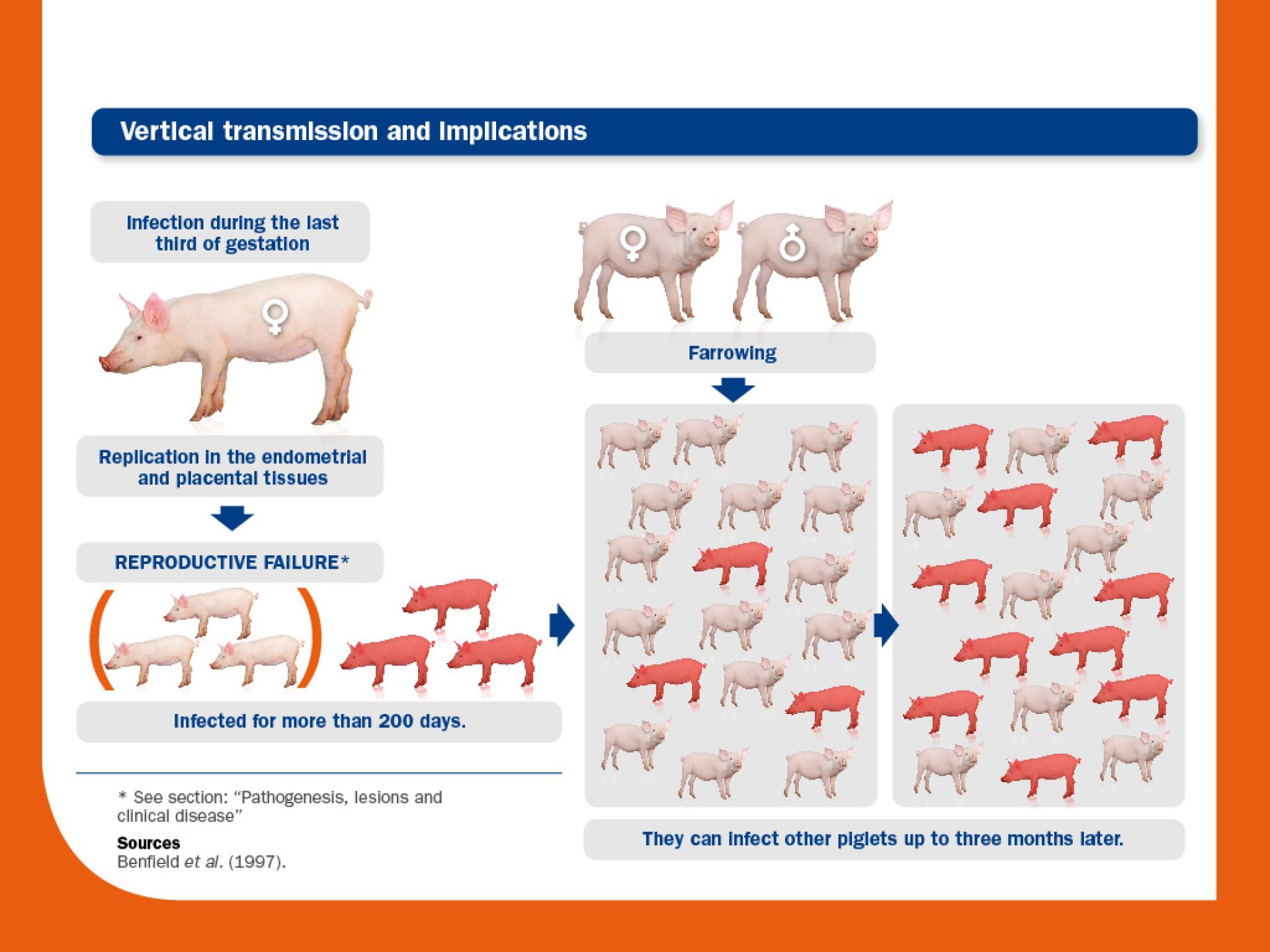I. DIRECT TRANSMISSION:
a. HORIZONTAL TRANSMISSION:
Routes of shedding:
Infected pigs can shed virus from multiple routes and for a long time; mainly by nasal secretions, saliva and semen; less frequently in milk and colostrum, and rarely in urine and faeces. The amount of virus shed, together with the duration of the shedding, vary significantly among strains.
